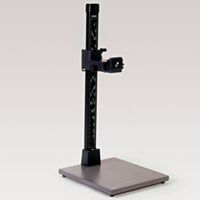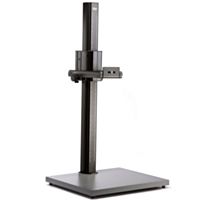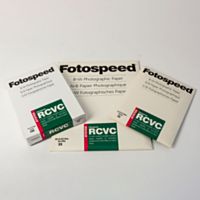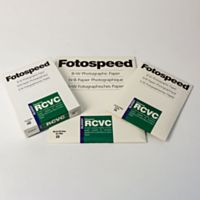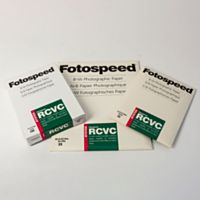Top tips to see like a pro photographer, part 2
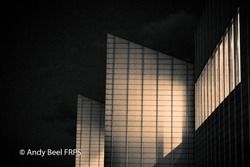
-->
Andy Beel FRPS is a professional photographer, writer, mentor and workshop leader, and one of our Fotospeed photographers. In the second blog in his ‘See Like a Professional’ series, Andy shares his tips on how to focus on your subject, frame and background. Andy uses Fotospeed Platinum Baryta 300 and Etching 285 papers.
You can find out more about Andy here
I have said many times that photography is a very individual practice, the resulting digital image or print is brought about by a myriad of different routes. Each photographer has their own way of coming to that settled and satisfying result of vision, style and the craft of printing. To find out more about this, take a look at German Fotospeed photographer, Elke Vogelsang’s blog post on the benefits of printing your own work.
Relax and observe your chosen subject
Swimming Pool, Cliftonville Kent, February 2018
As a generalisation, many photographers see the outline of the picture in their mind’s eye and take the shot with a very short period of observation. In some cases, this will be the appropriate thing to do due to the timing available, the shot will be lost if action is not taken immediately. For example, this could be true of street photography, motor racing or team games. Where you have the opportunity to observe, or to put it in a more poetic way, “time to stand and stare,” seeing benefits can be gained.
Take, for example, the practice of the excellent Fotospeed photographer Paul Sanders – he will spend much time observing his subject even before taking his Fujifilm GFX 50s camera out of the bag. Finding the most useful viewpoint and background for your subject is one of your key jobs as a photographer. As you change your viewpoint, there will be a corresponding change to the resulting background. Finding the viewpoint that gives you what you want to say without distractions is the whole point of observing your chosen subject.
In recent years, Mindfulness has come into the orbit of photography. Without going into long explanations about Mindfulness, here it simply means to be “completely in the moment”. We need to give our full undivided attention to observing and framing our chosen subject. We cannot be distracted by worrying about how to operate the camera properly. When you are looking through the viewfinder, 100% of your concentration must be channelled into the picture taking and making process.
True observation is not a quick glance, it is an intense scrutiny of your chosen subject just as an artist would observe their subject matter before sketching with a pencil. You cannot sketch in detail without keen observation.
Fully work your subject and frame

Isle of Sheppey Crossing February 2018 – 1 of the 24 frames taken
A major mistake made by many is they fail to explore all possibilities of the subject, viewpoint and framing. You will note that there are two parts to this topic the first being find your viewpoint and angle of view. So, you’re stood in the right place and you have chosen an appropriate focal length to encapsulate your vision.
To carry on the second point from above:
- How capable are you of arranging your dominant subject matter within the frame?
- Is there only one satisfying arrangement?
- How else could you compose the picture so you have a variety of options to choose from when you come to select a file to be post-processed?
To quote the highly esteemed Canadian photographer and writer Freeman Patterson “Only use the rule of thirds when all other arrangements fail to satisfy.”
The photographer who presses the button very few times of the same subject must be highly confident that their commitment to a small number of frames will not cause disappointment later.
Look for the extraordinary within the ordinary

Both ends of Herne Bay Pier – the middle section was blown away in a 1978 winter storm
Do you feel when you go out with your camera you’re looking at the same old, same old stuff?
“The real voyage of discovery consists of not seeking new landscapes, but having new eyes.” Marcel Proust
Familiarity can easily breed contempt, however, there is always the excitement of a new location that makes the visual creative juices flow. We may travel halfway around the world and find great stimulation in the new and novel.
But to see photographically in depth in many cases will require repeated visits to a familiar location or subject. Repeated visits allow your knowledge and appreciation of the totality of the subject to grow at different: times of the year, weather conditions, lighting and of course, the variety of subject matter.
Less is more

Turner Contemporary Museum, Margate – February 2018
As a photography mentor, my clients come with all sorts of different needs in their ability to take and make pictures. In general, photographers fall into three camps:
- Those who easily see an interesting visual composition in any given scene
- Those who with work can find a pleasing composition
- Those who struggle to see any picture anywhere
Those of us in the second and third categories may have a tendency to be looking at everything and seeing nothing. Our concentration may be out of kilter because the camera is fitted with a zoom lens which means that they have the opportunity to capture many possibilities. In order to reduce the number possibilities to a manageable number, choose a preferred focal length and look for pictures that can be taken at that length. Also, on the same theme of less is more, if you want to train yourself to see better, go out with a telephoto lens and look for pictures to capture.
Many photographers identify with the idea of zooming in to exclude unwanted periphery and distractions. Have you considered the equal and opposite action of zooming out to find the minimum amount of visual information to create a cohesive picture? Sometimes turning a problem on its head can help to find a solution.
Be brave and get closer
Swimming Pool Cliftonville Kent February 2018 – taken 150mm from the foreground subject with a wide-angle lens – be brave and get closer
If you feel your work lacks immediacy and connection with the subject matter, I suggest using a wide-angle lens to give your pictures more impact. Impact can be increased by getting closer to the subject matter – the wider the angle the lens, the closer you need to be.
Pictures gain impact when the foreground is filled, this is particularly true of landscape photography. Perhaps not an approach I would recommend for candid portraiture, but it seemed to work for the New York street photographer Bruce Gilden. There are no rights and wrongs in photography, you have to follow your own vision and style.
You may be aware of the quote by Robert Capa, “If your pictures are not good enough get closer”. As a photographer in the Second World War, he did not necessarily mean to get physically closer. We can also get closer by training our awareness and perception of the subject so we become closer and in-tune with its essential and significant elements.
For example, the finest photographs of any subject will change, add or improve the knowledge of the viewer about the chosen subject. This is quite a statement when you consider the millions of pictures posted on social media every day. Much of visual information we see each day is lost in what amounts to visual noise.
Ignore the background at your peril

Herne Bay Pier – note the distracting wind turbines in the background
Your job as a photographer is to take a picture (a communication document) that’s intelligible to the viewer. You are the viewer’s eyes, you decide what to include and exclude, yours is the job of deciding what is significant and why. The background is in equal part of the picture, it is just as important as the foreground. If the background is not helping to amplify the message carried in the foreground, the impact of the picture is weakened.
It is always good photographic practice to check the background for distractions before pressing the shutter release. For example, it may be that the proverbial “white van in the background”. If your subject hasn’t moved, you haven’t lost anything by waiting for the van to move out of the picture. Such a distraction may be difficult to remove at the post-processing stage. The attitude of “I will take that out later,” if it can be done in-camera, just adds work.
Going back to what we said earlier about the choice of viewpoint: viewpoint subject, and background are always linked together. Change the position of one and a different picture is composed.
These two blog posts have given you ten ideas to think about seeing like a professional, but not every idea will apply directly to your photographic practice. The best free tip I can give you is, “every time you press the shutter, it is an opportunity to get it right, don’t waste it by a lack of time in the Learning-Zone and a trained intuition”.
Andy Beel
Want more ideas on how to improve your photography and prints? Check out the rest of our blog, or get in touch to see how Fotospeed can help!
If you would like to stay on top of all the latest information from Fotospeed don't forget to sign up to our Newsletter.


